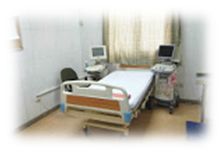Case Quiz (April 2022)
A 10-year-old girl was admitted because of periorbital edema. Her previous history was significant for 3 previous episodes of macrscopic hematuria 2-3 days following upper respiratory tract infections. Laboratory parameters were as follows: hemoglobin 8.4 g/dl, platelet count 108,000/l, white blood cell count 9.600/ll, blood urea nitrogen 58.3 mg/dl, serum creatinine 1.53 mg/dl, serum albumin 2.39 g/dl. Serum electrolytes were within normal limits. Serum levels of C3 and C4 were 16 mg/dl (normal range 79–152 mg/dl) and 13.3 mg/dl (normal range 10–40 mg/dl), respectively, with normal plasma levels of complement factors H and I.
Urinalysis showed massive proteinuria (300 mg/dl) with a normal sediment and a specific gravity of 1,014. Renal ultrasonography showed increased echogenicity in both kidneys. No anti nuclear, anti dsDNA, anti-complement factor H antibodies or C3 nephritic factor were detected.
A renal biopsy was performed. Light microscopy showed (figure) varying degrees of mesangial matrix increase, segmental endocapillary proliferation, thickened capillary walls, and double contour formation. Four glomeruli were segmentally or globally sclerosed. The tubulointerstitial area revealed mild fibrosis, focal tubular atrophy, a group of foamy histiocytes and patchy infiltration of mononuclear inflammatory cells. The vessels were unremarkable. Immunofluorescence studies were strongly positive for C3 and weakly positive for IgM but were negative for IgG, IgA, C1q, C4, kappa and lambda light chains
Prednisone (2 mg/kg/day) and enalapril were administered. This treatment failed to induce remission and low C3 persisted. Therefore, pulse methylprednisolone and losartan were added to the therapy. Proteinuria, impaired kidney function and low C3 level did not resolve. Then, eculizumab (900 mg/ week for 4 weeks, 1,200 mg/every 2 weeks thereafter) was started. After 10-month follow-up, proteinuria resolved but low C3 still continued, serum creatinine rose to 3.1 mg/dl.
A diagnostic test was done

Case Answer (April 2022)
CFHR5-related nephropathy is a familial form of C3GN has been described in patients of Cypriot origin due to a mutation in the gene for complement factor H-related protein 5 (CFHR5). Inheritance is autosomal dominant with more than 90 percent penetrance.
The clinical manifestations include hematuria in approximately 90 percent, accompanied by proteinuria in 38 percent. Episodes of macroscopic (gross) hematuria can occur within one to two days of a URI and can be recurrent. The development of proteinuria (greater than 1 to 1.5 g/day) is a major predictor of a progressive disease. Recurrent nephropathy can occur in transplanted kidneys. There is no treatment of proven efficacy.
DDD was excluded in this patient owing to the lack of electron dense deposits within the glomerular basement membrane.
